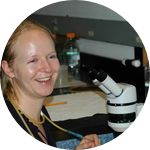Haven't backed any projects yet!
September 2019 - AEFW life cycle paper - out now!
September 2019 - AEFW life cycle paper - out now!The Life Cycle of the AEFW and the effect of temperature on development rate and numbers.Here, at last, is our paper on the life cycle of the AEFW....
January 2018 - research up-date and introducing a new member of the team
January 2018 - research up-date and introducing a new member of the teamDr Jessica Goodheart (University of California, Santa Barbara), our newest member of the team (see her bio in the ‘team’ sect...
Up-date on AEFW experiments at AIMS.
Two weeks in and we’re up to our eyeballs in AEFW eggs and hatchlings!We’re running experiments to see the effects of temperature on AEFW development; time to hatching, hatching success and develop...
Hello from the Australian Institute of Marine Science!
AIMS is Australia’s tropical marine research agency, and the National Sea Simulator (SeaSim) here is a world-class marine research aquarium facility for tropical marine organisms in...
Collaborative visit to Australian Institute of Marine Science coming up……
Cat and I are going to visit our collaborators at the Australian Institute of Marine Science (AIMS) and James Cook University (JCU) in Townsville, Queensland, for 22 days of AEFW ex...
New collaboration started with James Cook University and the Australian Institute of Marine Science.
We are very excited to announce a new collaboration with a team of scientists from James Cook University (JCU) and the Australian Institute of Marine Science (AIMS), Townsville, Queensland. The tea...
AEFW experiments - June 2016
Cat has had a very busy 6 months running two experiments; the ‘AEFW die-out experiment’ and a ‘Bio-control experiment, see the summaries below. She is also rebuilding the AEFW populations to contin...
December Lab Note
Hello,Cat has spent the last three months building up the two AEFW tanks after the worm die off this summer.She now has two good populations of AEFW and we are ready to resume the life cycle experi...
Summer news from the AEFW tank.... a 'happy' accident?
Cat has had an frustrating, but potentially exciting, time of late. The currently planned AEFW life cycle experiments have been delayed because of that, but this delay may prove to be amazing.She h...
